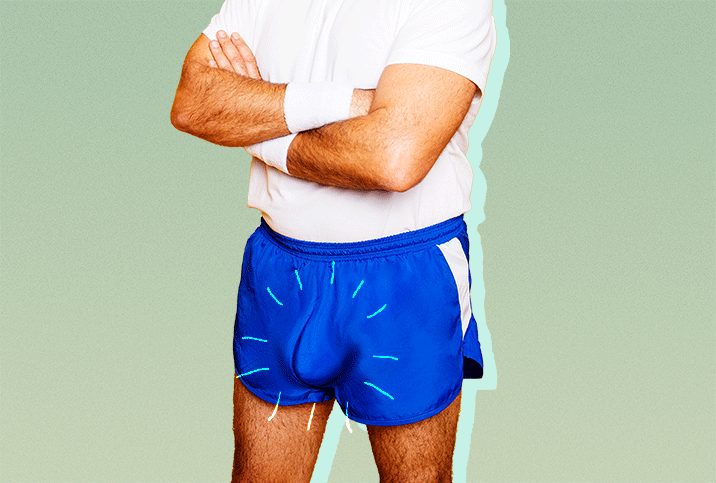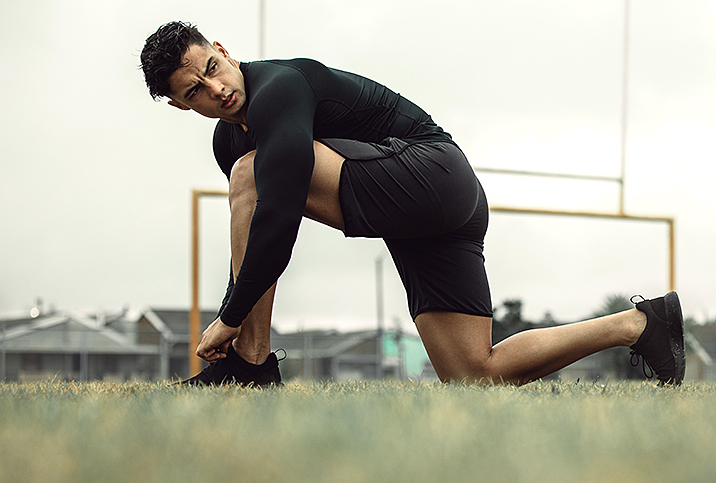Boxers or Briefs? The Evolution of Underwear for Men

Editor's note: Some sources for this article requested their full names not be used.
From Tom Cruise's underwear-clad dance in "Risky Business" to Christian Bale's white boxer workout scene in "American Psycho" to the tiny G-strings of "Magic Mike XXL," iconic male underwear moments can be found in dozens of flicks. However, the history of men's underwear stretches much further back than the big screen.
Throughout the centuries, men have experimented with dozens of styles, fabrics and fashions for undergarments. We've gone through eras when underwear was worn as outerwear, eras when underwear was never meant to be seen and, of course, eras when underwear made the occasional sly appearance just above the waistband. The answer to the age-old question of "boxers or briefs?" has evolved in a variety of ways.
The first men's underwear
The first known men's underwear was probably the loincloth, which was draped over the genitals, according to an article by Mental Floss. Images of various loincloths can be found in ancient art from Egypt, the Aztecs and many Indigenous tribes around the world from as early as 3000 B.C.E.
Thousands of years after the loincloth came the codpiece in the 15th century. It was an undergarment designed to be worn with breeches. As men began wearing more clothes, like trousers, they required more extensive underwear. The codpiece offered more protection and comfort, but its easy-to-open-at-the-front design also made it practical.
Styles change over time
Throughout the next few centuries, men's underwear continued to change. Usually, these changes coincided with alterations in trouser style. In many cases, underwear was designed in the same shape and style as the trouser fashion du jour to help give the pants an accurate shape and fit.
While underwear was beginning to look more and more like the underwear we know today, many men still went without it. In fact, it was often only the upper classes who could afford to wear undergarments. Lower-class men often tucked their shirt tails between their legs as an additional makeshift layer for hygiene purposes.
Entering the modern era of men's underwear
In the 20th century, the world was introduced to modern men's underwear. In the 1920s and '30s, men all over the West were suddenly deciding between boxers and briefs.
The first pair of boxers was reportedly designed by Everlast in 1925. They were initially designed to be worn by boxers, but soon became the primary choice for men's underwear.
The year 1935 proved to be big for the development of men's underwear when Cooper's, an American underwear company, introduced the Jockey Y-front underwear design, inspired by French briefs. The Y-front was made with knitted cotton and offered additional support and structure. The name came from the inverted Y-shaped flap opening at the front. By 1971, Cooper's had rebranded as Jockey Menswear Inc.
Years later, in 1982, Calvin Klein created its iconic briefs design. At a glance, it looked a lot like the Jockey Y-front; however, Klein's briefs were tighter and skimpier. And, of course, they featured the brand name on the waistband. Klein's design may have been less practical and less comfortable, but that was the intention. As the designer once said, "Underwear was pure sex."
According to New York Magazine, briefs remained the most popular style until the 1980s. By 1985, they were four times more popular than boxers.
Klein continued to dominate the industry. By 1992, he created a famous campaign that featured "Marky Mark" Wahlberg grabbing his crotch through a pair of boxer briefs. This design marked a new style that combined briefs and boxers for a fit that was tighter than boxers and longer than briefs.
Toward the end of the 20th century, more and more brands began following Klein's lead and placing their names on the back of the waistline of their underwear. These brand names became a status symbol as more and more young, urban men adopted the low slub trouser look that made their underwear visible.
Are briefs really better?
According to Patrick Kenger, an Arizona-based men's stylist from Pivot image Consulting, there's a reason men prefer briefs to boxers.
"The transition from boxers to briefs has been a welcomed one for most men," he said. "They're generally more breathable, help to 'secure' things in place. Importantly for me working in men's fashion, briefs look and feel much better underneath clothing. Boxers will bunch up as you put on pants and sit funny underneath them."
"I personally always wear briefs," said a 30-year-old man from New York. "It feels a lot more held together if you know what I mean. Plus, I don't have to adjust throughout the day."
So are men's briefs back in style? Many men have switched back to briefs, yes, but some still prefer boxers.
"I think they look more classic," said James, 31, of London. "Like for me, stylistically, I've always preferred a really old-school look. Wearing briefs under my style just somehow feels wrong and weird."
These days, many men find that boxers look "juvenile," Kenger said.
"Briefs tend to look a bit more mature and form-fitting," he said. "In general, when most guys make the jump to briefs, they don't switch back."
What does the future hold?
According to Grand View Research, the iconic boxer brief style is still the most popular design, while cotton is by far the most popular fabric.
Plus, a study published in 2016 indicated underwear shape has no significant effect on semen production or fecundity. In other words, the boxers or briefs question is purely a question of aesthetics and comfort rather than of sexual health.
Will the briefs trend continue? One aspect is certain: The strict division among genders in fashion is becoming increasingly blurred, and people who identify as male are increasingly experimenting with what were classically thought to be feminine styles. We may see this blurring of the lines occur in underwear styles, too, as designers continue to balance comfort with style trends.
"If something both makes a man look and feel better, he should be all about it, rather than worrying about gender binaries," Kenger said. "I think men have just become more open about their bodies and more open about looking good. If you're a guy who cares about the clothing you put on, there's no reason not to care about what you put on underneath that clothing."


















